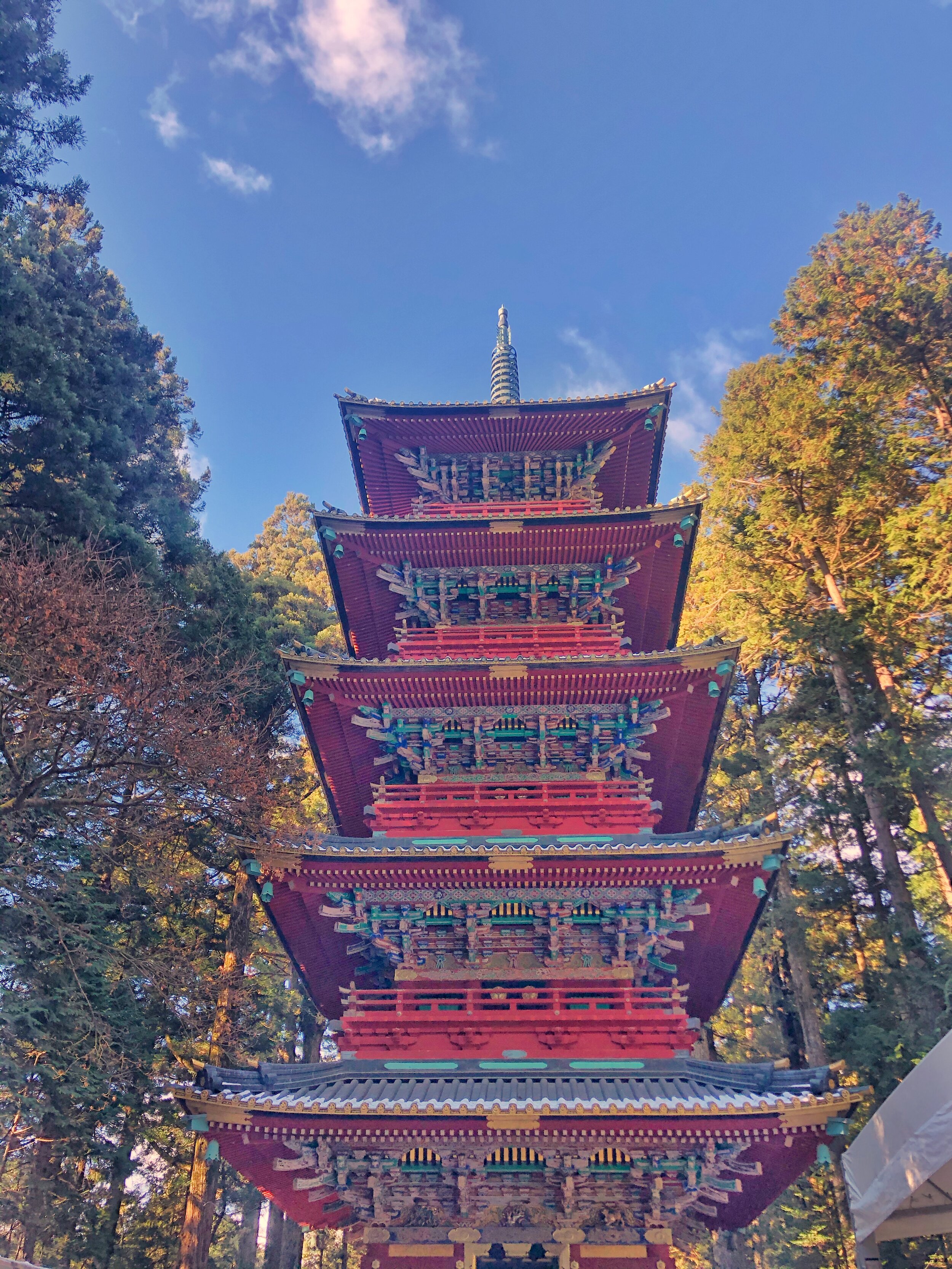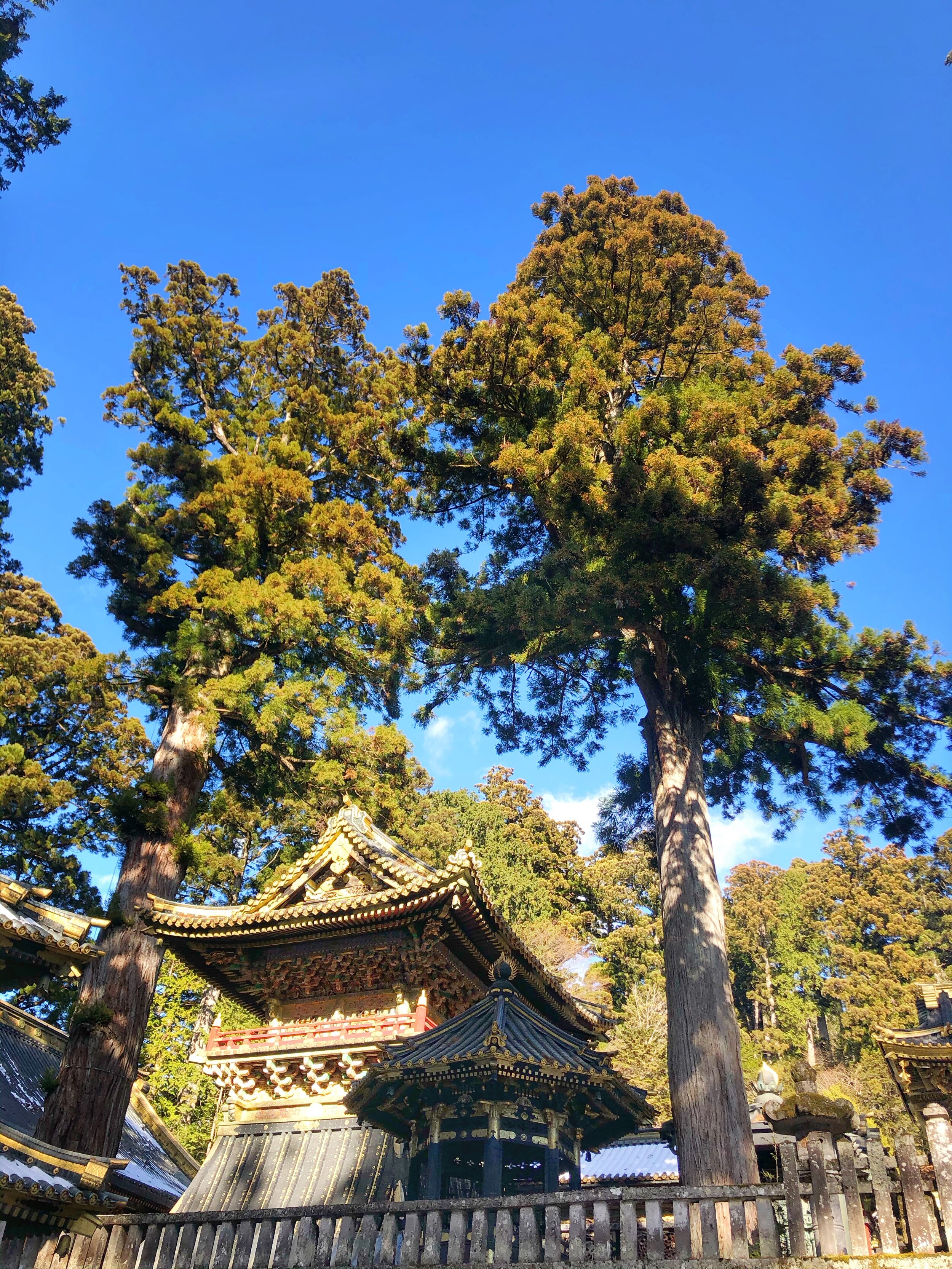Sightseeing in Nikko
A long time favourite of Tokyo-ites and overseas visitors for day trips and weekend getaways, Nikko in Tochigi Prefecture is the gateway to Nikko National Park, beloved by hikers for its many beautiful hiking trails and scenery especially in autumn when the leaves turn their vibrant shades of yellow, orange, red & brown.
Renown as well for it’s UNESCO World Heritage Site, some of Japan’s most beautiful temples & shrines are located in the area.
Honestly it took me years to visit Nikko area, over a decade in fact since living in Japan. Perhaps because it was so easily accessible, I felt there was no rush to see it. Additionally as it’s always been so popular, the crowds were a deterrent for me especially with the increased costs due to it’s popularity (like Hakone). I preferred to travel further afield, to the lesser travelled (which was also kinder on my wallet).
However one year I finally bit the bullet, and spent 5 days in the area, with 2 days in Nikko area itself, then another two days in Kinugawa Onsen to relax (an easy train ride away). For I figured if I was going to visit Nikko area, I would do it properly rather than a rushed stressful day trip. In Nikko we booked a stay at Nikko Station Hotel 2 (sorry no photos, forgot) which was nice, clean and simple - perfect for a stay where you’re mainly exploring.
SHINKYO BRIDGE | 神橋
Designated a World Heritage in 1999, the renown Shinkyo Bridge is the gateway to Nikko’s mountains. Belonging to Nikko’s Futarasanjinja Shrine, this vibrant vermillion bridge is steeped in legend. The tales tell that the first head priest of Nikko; the Buddhist monk Shodo asked the mountain deities for help crossing the Daiya River, at which point two snakes appeared and transformed into the bridge. Historically only the Shogun and other important dignitaries were allowed to use in the bridge, however today one can cross it for a fee (you cannot cross it to the other end though, you must turn back). We didn’t walk along the bridge and chose to just appreciate it from a distance.
RINNOJI TEMPLE | 輪王寺
Founded by Shodo Shonin, the Buddhist monk who introduced Buddhism to Nikko in the 8th century, Rinnoji Temple is the area’s most important temple. The temple’s main attractions are the Sabutsudo (large gold lacquered, wooden statues of the 3 deities Amida, Senju-Kannon; kannon with a thousand arms and Bato-Kannon; Kannon with a horse head)
These three deities are believed to be Buddhist manifestations of the three mountain deities which enshrined at Futarasan Shrine. Within Rinnoji Temple’s grounds, lies the temple’s treasure house and a lovely small Japanese style garden called Shoyoen which is popular during Autumn’s Koyo. It is free to walk around the temple’s grounds, however there is an entrance to the Sabutsudo, the treasure house & the garden Shoyoen.
As someone who’s seen many temples, shrines, Buddha statues etc, we were happy to just wander freely.
TOSHOGU JINGU | 東照宮
One of Japan’s most opulent shrines; the stunningly, intricately decorated and carved Toshogu Jingu is the resting place of Tokugawa Ieyasu (the founder and shogun of the Tokugawa Shogunate of Japan which ruled from 1603 until the Meiji Restoration in 1868; one of the “Three Great Unifiers of Japan” along with Oda Nobunaga and Toyotomi Hideyoshi). Originally of a more simpler design, the 17th century saw Toshogu enlarged into what we see present day, as a tribute from his grandson Tokugawa Iemitsu.
To enter the shrine’s grounds, one must pay an entrance fee of 1600JPY, 1000JPY for the museum or 2400JPY for both. We chose to explore the shrine’s grounds, and it was well worth it for any individual who appreciates history and the breathtaking, painstaking work created to adorn Tokugawa Ieyasu mausoleum.
Set in the forest, like the other temples and shrines, one can see why it was chosen as a resting place for one of Japan’s most revered historical figures. Numerous wood carvings, gold leaf and a multitude of details were used and created to pay homage to Ieyasu. The area is also a wonderful showcase of when both Shinto& Buddhism elements coexisted together in harmony until the Meiji Restoration when Shinto was separated from Buddhism. However Toshogu was too intricate, so it was left alone.
Make sure to take a moment to admire the beautiful 5 story pagoda located in front of the main entrance gate, then head to the storehouses found after, that are intricately decorated with a plethora of designs and patterns.
THE THREE WISE MONKEYS
Perhaps one of the most famous, and well loved carvings on the storehouses of Toshogu are that of the three wise Japanese monkeys that embody the principle “hear no evil, speak no evil, see no evil”
Another popular carving is that of the “angry elephants’
FUTARASAN JINJA | 二荒山神社
Founded in 782, Futarasan Jinja is located next to Toshogu Jinja. The shrine is dedicated to the deities of Nikko’s three most sacred mountains, Mount Nantai, Mount Nyoho and Mount Taro. Generally the grounds of the shrine are free to enter, except for a small area where there’s a fee to visit a garden, along with a couple more halls, old sacred trees and a spring.
WISH TO SEE MORE….
If you have more time and wish to do a hike, see more nature and visit more of Futarasan Jinja; make sure to visit nearby Okunikko and Lake Chuzenji where one can discover two more Futarasan Shrines; one at the summit of Mount Nantai and the other at Lake Chuzenji’s northern base.
ACCESS TO TOBU & JR NIKKO STATION
BY TRAIN
FROM TOBU ASAKUSA STATION | approx 2-3 hrs | COST: ~1400 - 3340JPY OW (local/expresses)
FROM SHINJUKU STATION | approx 2hrs | COST4090JPY OW | limited express train
TO GET TO THE TEMPLES & SHRINES
as all the temples & shrines are around each other, one can walk to them in roughly ~30-40mins
otherwise a local bus takes 10mins (350JPY OW)


























